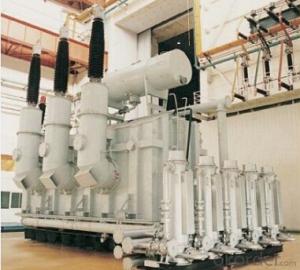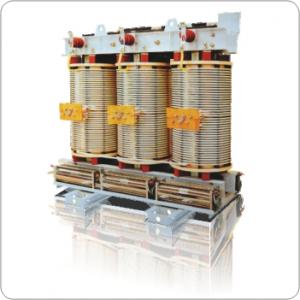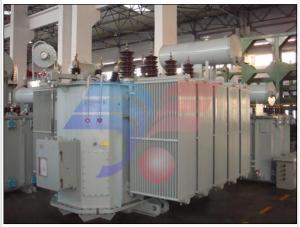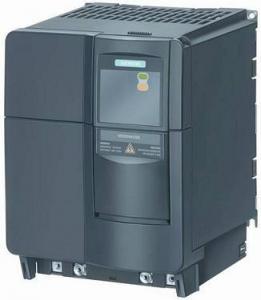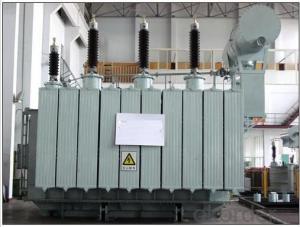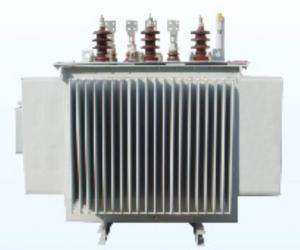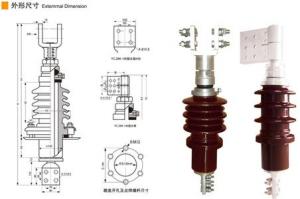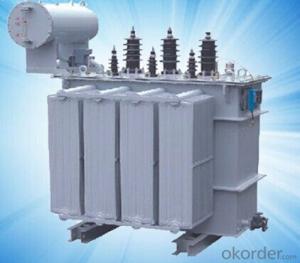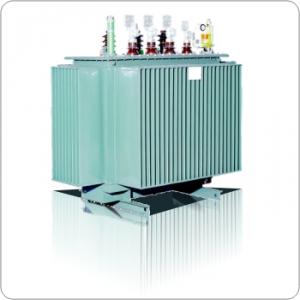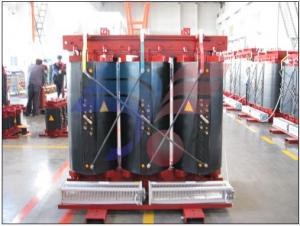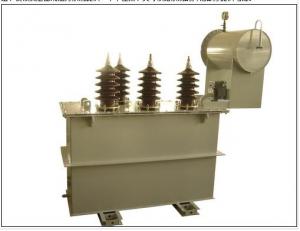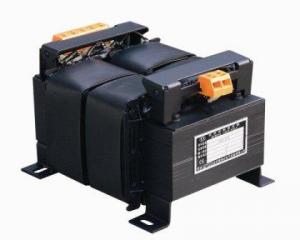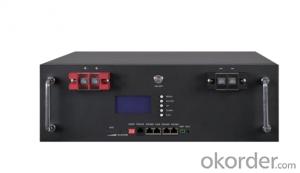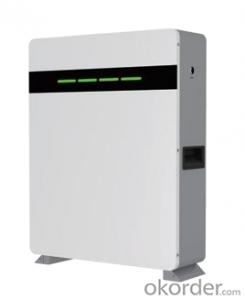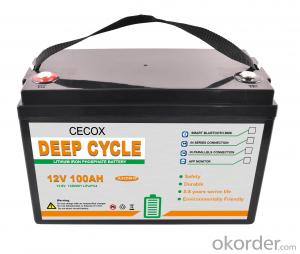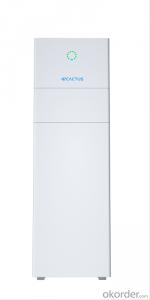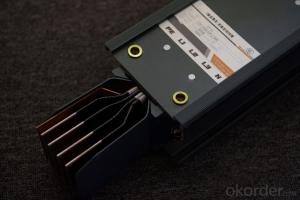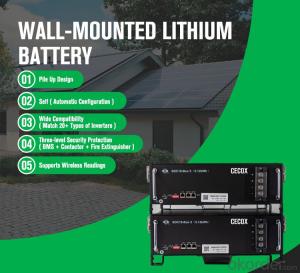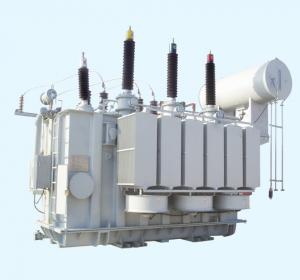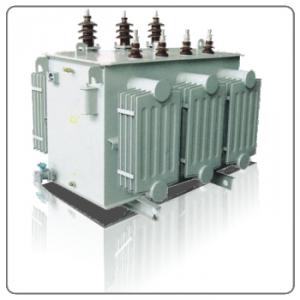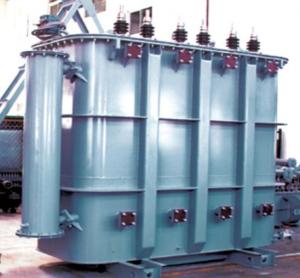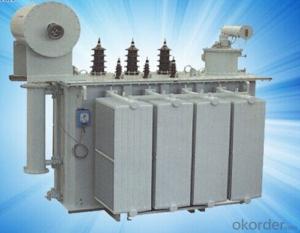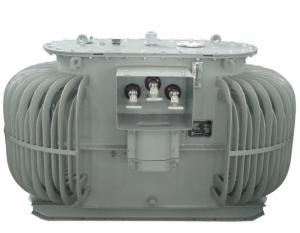360MVA/242kV three phase water cooling main transformer for hydro power station
- Loading Port:
- Tianjin
- Payment Terms:
- TT OR LC
- Min Order Qty:
- 1 pc
- Supply Capability:
- 1 pc/month
OKorder Service Pledge
OKorder Financial Service
You Might Also Like
Quick Details
| Place of Origin: | HeBei | Brand Name: | CNBM | Model Number: |
|
| Usage: | Power | Phase: | three | Coil Structure: | Toroidal |
| Coil Number: | Capacity: | Rated Voltage: | 360MVA/242kV | ||
| Connection Symbol: | YNd11 Dyn11 YNyn0d11 | Tank: | Cover type or Bell type | OLTC: | MR or ABB or SMS |
Packaging & Delivery
| Packaging Detail: | Mainbody --naked Disassembled parts -- crate |
| Delivery Detail: | 3 months |
Specifications
1. CESI certificate
2. High short-circuit withstand
3. Low loss, PD and noise
4. CTQC certificate
5. No leakage
Description
The application of the 360MVA/242kV three phase water cooling main transformer for hydro power station.can significantly improve the economy of the OLTC substation, and matches well with the transmission capacity of OLTC lines, which has wide prospect of application. Because of its large capacity and large volume, the whole transportation weight with nitrogen is about 470-490 tons, and due to the restricted transport conditions, the transportation becomes the critical issue for the 360MVA/242kV three phase water cooling main transformer for hydro power station. In order to make the products applicable to any OLTC substation in our country, the state grid of corporation of China set the "A study of easy-transport large capacity OLTC Transformer” as a key scientific research projects, and entrusted BTW to carry out the research.
During the process of research and development, BTW adopted the advanced design technology and modular design, the transformer can be transported disassembly and with advantages of compact core and winding body, less transportation weight and low transportation cost, effectively solves the need of OLTC construction in the transportation restricted areas. By using the most advanced 3D magnetic field calculation software, BTW performed detailed analysis and calculation for the magnetic flux leakage and eddy current loss of the transformer coil, iron core and oil tank steel structures. Besides, by using of the advanced electric field calculation software, BTW performed detailed analysis and calculation of main longitudinal insulation, and mastered the arrangement of the main longitudinal insulation of large capacity OLTCtransformer and the control of distribution of winding magnetic flux leakage. All of which make the products with low loss, low noise, small volume, strong anti short circuit ability, no local overheating and other significant advantages, and guarantee the long-term safe and stable operation.
The world's first on-site assembled large capacity OLTC Transformer’s right at the first time once again filled the gap in the field of OLTC transformer research after Chinese transformer industry overcame the difficulty of integral transport of the360MVA/242kV three phase water cooling main transformer for hydro power station, which marks BTW has fully occupied the world transformer industry technical peak. The successful development of the product filled the gaps in the domestic technology and met the urgent need of OLTCconstruction application in our country, greatly improved the technical level and manufacturing ability of BTW in terms of OLTC Transformer products.
- Q:hello Im trying to ride my jet ski but the battery keeps dieing I tested my rectifier and it is getting no current at all but my stator is kicking out power so could I use a transformer to change the current from AC to DC or 20v AC to 13.5 volts DC
- No. Transformers and rectifiers are completely different things. A transformer converts high voltage AC current to low voltage AC and vice versa. A rectifier converts AC current to DC at the same voltage. In your case, you need 4 new rectifiers to convert 20V AC from the alternator to 20V DC and a voltage regulator to fix the output voltage to around 13.5V DC
- Q:If the primary circuit of a transformer is connected to a power source and the secondary circuit has a light bulb, will the light bulb turn on and stay on when the power source is turned on? Or will it turn on for a few seconds and then turn off?This question's been bugging me because I think because transformers are usually wired through AC that the bulb would only turn on for a few seconds and then turn off, but then shouldn't current be constantly flowing so it would stay on?Thanks for and clarifications.
- Umm, is the power source AC or DC? You are right, transformers usually use AC. Is it not using AC in this example? You didn't say. If it's using AC, the light bulb will stay on. The current actually switches on and off, but so fast you don't see it. Well, normally, for household 60Hz AC power. But who knows with this mystery power source. It could be 1Hz AC. If it's using DC, then it will come on for a short time (a few seconds? I don't know). Yes, current is continually flowing through the primary circuit, but after a while no current will be flowing through the secondary circuit where the light bulb is connected. It takes change in current in the primary circuit to induce a current in the secondary circuit.
- Q:Hello forum,I have a question pertaining to transformers. I understand the current oscillating in a coil of wires around a toroid-type metal induces a moving magnetic field in the metal, which induces current in another set of coils on the other side, right? If I'm slightly correct, yay1) Are transformers specifically AC? Can there be DC transformers or would I have to rectify it after it's been stepped-down?2) Is the output voltage independent of the current? Let's say I have 50W, 120V stepped-up to 240V. If I change the power supply to 100W, will the voltage still be stepped up the same, while current would be twice as high? (Ideally)Thanks!
- A transformer is just a double inductor an inductor that uses the magnetic field generated by moving electrons to move OTHER electrons (in the other coil). But the magnetic field must itself move, in order to move those other electrons. With DC, the electrons are moving at a fairly constant rate, so they produce a fairly static magnetic field. It's not enough to know that moving electrons produce a magnetic field; you have to see that the electrons require more than a velocity; they require an ACCELERATION (time rate of change of the velocity) in order to make the magnetic field also change. So you can see immediately from the physics of the matter, that transformers are only useful for AC, since you want the electrons in the secondary coil to be oscillated by the moving magnetic field from the oscillation of the electrons in the primary coil. Inductors are useful, but they are also AC devices. There are some uses in DC circuitry, since DC voltages do change in response to external events (like when the system is turned on, or when there's a variable load) but largely these uses are semi-static.
- Q:I am looking for a transformer with an output of 6 volts, and 1.8 amps, or any transformer that can run that cycle. Please, let me know. I've been looking for months now, and cannot find anything. Please help. Where would I buy it? Lowes?
- First okorder
- Q:1.) What is the function of a transformer?a.) It is a device that can change the voltage of an AC supply.b.) It can change a low voltage supply into a high voltage supply or vice versa.c.) It is a device used mainly to change AC into DC.d.) A and B are correct.2.) What is the function of a transformer at a power station?a.) To convert DC into ACb.) To produce very high voltagesc.) To produce the currents in the power linesd.) None of the above.
- This Site Might Help You. RE: Physics: What is the function of a transformer? 1.) What is the function of a transformer? a.) It is a device that can change the voltage of an AC supply. b.) It can change a low voltage supply into a high voltage supply or vice versa. c.) It is a device used mainly to change AC into DC. d.) A and B are correct. 2.) What is the function
- Q:I am throwing my sons 7th birthday party, and again this year it is Transformers. He is asking to have some unique foods as oppose to traditional party pizza. We, of course will still have a cake but I am drawing blanks to food ideas. Does anyone have any suggestions? Thanks in advance!!
- Here's a really easy nacho dip that tastes awesome! 1 package Velveeta mexican chese (you can do spicy or mild) 1 can Hormel chili +/- green onions Melt it in an oven-safe bowl in the Microwave or oven (for however long it takes to be all melted) stirring occasionally, and eat it with tortilla chips. It's awesome!!
- Q:hi, so i know at the distribution level transformers are used to step down the voltage to be supplied to the residential/commerial customers. I was just wondering though. what actually feeds the transformers and where are these feeds coming from?also, could anyone briefly explain what is inside an actual transformer such as (primary elbows, secondary, bus bars, etc)thanks in advance!!
- Hi pal! A transformer is a device which converts electrical energy. just remember that. now we know energy is E VI.t right? Now a transformer has two ends. one is the primary winding and the other is the secondary winding. winding means wound wires ;ole am inductance wire. the two of them are connected by a metallic core through which magnetic flux flows linking the two windings. Since energy is constant Voltage of primary x Current in primary Voltage in secondary x Current is secondary Now, since the number of turns of the 2 winding are different, thus the flux linkages are different i.e. N x phi so induced emf by faraday's law is different. so if secondary number of turns is suppose 10 and primary is 1000 then if voltage in primary is 1000V secondary is 10V this is how it steps down. so the transformer is FED by a high or low voltage source via busbars. this is as briefly as i can explain without boring ya!! :)
- Q:How do you test this transformer with a multi-test meter? It was in a gong style door bell system. The 'clanger' unit has two windings withe the striker arm parallel to the end of the windings. Elaborate please. parts are difficult at my location.
- Are you testing the transformer or the door bell solenoid coil? If it's the transformer: 1. ANY transformer has to be AC doesn't it? 2. 16V. x 10A. 160VA. 3. With your multi -tester set for continuity or OHMS: a. test both coils for continuity.(Low resistance) b. test both coils for non-continuity to the frame, (ground). There should be no flow, very high resistance. If it's the chime coils: Test both coils for continuity, (There will probably be a 'common' 'return' connection) and for insulation, (no continuity to ground - the frame.) If the above check out, the unit should work unless there's some mechanical damage. Look for a jammed operating rod etc.
- Q:I purchased a doorbell in Europe, it has a transformer that goes from 220V to 14.8V, will the transformer work on 110, or do I have to replace the transformer?
- It shall not work on 110V. But you can feed the 240V find inside the power panel to this transformer to make it work. USA power system has both 120V and 240V existed in the power breaker box.
- Q:1. If the input voltage is 100V and output voltage is 200V, which side of the transformer winding will be primary?(a) 100V side (c) winding with loss turns(b) 200V side (d) winding with more turns2. Which of the following statement about humming of transformer is true?(a) The frequency of humming tone is 100Hz(b) The frequency of humming tone is 50 Hz(c) The humming is caused by a vibration of the low voltage winding through which the high current flows(d) The humming is caused by the private force of attraction between the lamination of the core3. In a 10 KVA, 230/1000V 1-? transformer, the no load current will be around(a) 3 A(c) 10 A(b) 0.5 A (d) 0.9 A
- A transformer can be used as step-up or step-down, but normally use is as step-down so b. for the first question. Second question, the humming is caused by d. and will be at the frequency of the supply. Third question would be b. or d. since the only current drawn on no-load is the magnetising current for the core.
1. Manufacturer Overview |
|
|---|---|
| Location | |
| Year Established | |
| Annual Output Value | |
| Main Markets | |
| Company Certifications | |
2. Manufacturer Certificates |
|
|---|---|
| a) Certification Name | |
| Range | |
| Reference | |
| Validity Period | |
3. Manufacturer Capability |
|
|---|---|
| a)Trade Capacity | |
| Nearest Port | |
| Export Percentage | |
| No.of Employees in Trade Department | |
| Language Spoken: | |
| b)Factory Information | |
| Factory Size: | |
| No. of Production Lines | |
| Contract Manufacturing | |
| Product Price Range | |
Send your message to us
360MVA/242kV three phase water cooling main transformer for hydro power station
- Loading Port:
- Tianjin
- Payment Terms:
- TT OR LC
- Min Order Qty:
- 1 pc
- Supply Capability:
- 1 pc/month
OKorder Service Pledge
OKorder Financial Service
Similar products
New products
Hot products
Hot Searches
Related keywords
